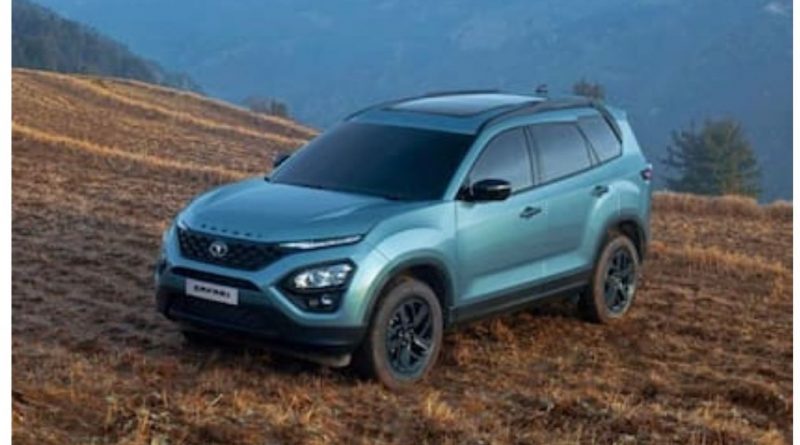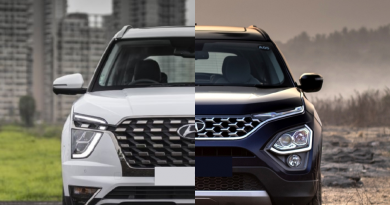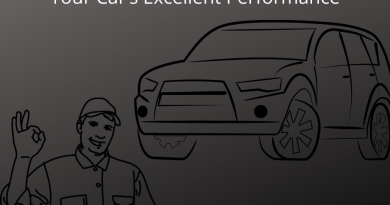Tata Safari Features, Price, and Specification 2021
The Tata Safari is a mid-size SUV produced by the Tata Motors since 1998. The first-generation Safari has been designed as a seven-seater SUV with a foldable third row, roomy interior; on the market it has positioned itself as an alternative from the competitive price to other brands off-road vehicles.
The Safari nameplate was re-introduced in 2021. Unlike the previous Safari, the second-generation Safari is a front-wheel-drive, monocoque crossover SUV, sharing its underpinnings with the Tata Harrier.
In 2017, Tata announced that the Safari Dicor was phased out with the Safari Storme being the only model sold.
Tata Safari price starts at ₹ 14.99 Lakh and goes up to ₹ 21.83 Lakh. The price of Diesel version for Safari ranges between ₹ 14.99 Lakh – ₹ 21.83 Lakh.
First Generation (1998) & Evolution:
The first-generation Safari was presented in 1998 in India. The Tata range in the nineties saw the expansion into new markets with newer models such as the Indica city car and the Safari. Exports to Europe took place during the same year, with sales in the UK in 1999. European Safari presented some changes in particular accessories to meet the needs of European customers; the bumpers were different in color compared to the rest of the bodywork. The name Safari was adopted to emphasize the supposed off-road qualities of the vehicle. In reality, the car was also designed for road use.
During the commercial life of the model, various aesthetic and mechanical updates were presented: in 2005 an important facelift was presented that saw the adoption of a new bumper shield, new optical groups and chrome grille, new interior and rear redesigned with graphics of the unpublished lights, new Borg Warner transmission unit and revised braking system.
In December 2006, a further update saw the adoption of the 2.2-litre Dicor diesel common rail engine from the PSA Group and revisited with AVL support. The 2.2-litre engine was Euro 4 compliant and replaced the previous unit in European markets while in India; the 3.0-litre engine remained in production. The updated model went on sale during spring 2007.
In 2010 an aesthetic facelift introduced a new chrome grille, new interior trim, new interior instrumentation with wood inserts for the central console and new body colors.
Variants:
Tata has brought back its flagship nameplate, the Safari with a completely new SUV. It is available in nine variants namely – XE, XM, XMA, XT, XT Plus, XZ, XZ Plus, XZA and XZA Plus. This SUV is available in six and seven seat configuration that depends upon the variant. Also, there is an Adventure model that features a black grille, roof rails, alloy wheels etc.
The base model of Safari is XE and the top variant Tata Safari XZA plus Adventure Edition AT which comes at a price tag of Rs. 21.81 Lakh which is also the top selling model among all.
Additionally, it is available in five paint options – Royal Blue, Tropical Mist, Daytona Grey, Orcus White and Tropical Mist Adventure.
1. Dimensions & Capacity:
The Safari uses Telco line’s Tata X2 body-on-frame platform. The car uses some elements of Land Rover’s D8 platform and Tata has named it OMEGARC. This SUV is 4,661mm in length and has a 2,741mm wheelbase.
Length: 4661mm Wheel Base: 2741 mm
Width: 1894 mm Kerb Weight: 1825 kg
Height: 1786 mm
Tata Safari comes with a 73 L boot and a amazing Fuel Tank capacity of 50 Liters. Tata Safari is a 7 seater SUV with a BS-VI Emission Control System.
2. Engine-train:
The engine of the first version was a 2.0-litre four-cylinder diesel (1948 cc effective), equipped with indirect injection and KKK turbocharger with two valves per cylinder. The engine is derived from the Peugeot XD88 unit built under license by Tata in India and used by Tata Telco line and Sierra. A 2.1 liter 16V petrol engine was added in 2003. In 2005, the 2.1 liter was discontinued. The 3.0 Dicor engine is the first direct injection diesel engine fitted by the Indian company, a modern four-cylinder engine with common rail injection and sixteen valve distribution.
In Present version, The Tata Safari has 1 Diesel Engine on offer which is 1956 cc with 4 valve-4 cylinder configuration. It is available with the Manual & Automatic transmission. Depending upon the variant and fuel type the Safari has a mileage of 14.08 to 16.14 Kmpl.
| Engine Displacement | 1956 cc |
| Engine Description | 2.0-litre Kryotec Turbocharged diesel engine |
| Max Power | 167.62 bhp@3750rpm |
| Max torque | 350 Nm@1750-2500rpm |
| Transmission | 6-speed Manual & automatic |
| Top Speed | 175 Kmph |
3. Brakes & Suspension:
Storm is Equipped with Antilock Braking System (ABS) and Electronic Brake force distribution (EBD) as standard in all variants. The braking system is equipped with Disc brakes in the front and rear, with twin pot Calipers at front and single pot caliper at rear combined offers adequate braking force.
Front Disk
Rear Disk
Being an off-road car parallel with on road performance, Safari has to make sure about its suspension. Tata Safari comes with smooth suspensions; Independent, Lower Wishbone, McPherson Strut with Coil Spring & Anti Roll Bar on front and Semi Independent Twist Blade with Pan-hard Rod & Coil Spring on the Rear.
4. Steering:
Tata Safari comes handy with its well designed 3-spoke Power Steering in Tilt & Telescopic Column. It mounted with Rack & Pinion type gear; which brings a big Turning Radius of 5.8 meters.
5. Comfort:
The New Safari comes with iRA – the Connected Vehicle Program, Hosting extensive safety, gamification, Convenience & diagnostics features. The seats themselves are quite comfortable and offer good bolstering and are easy to slide and recline. Space as well is quite abundant in the Safari’s cabin with good shoulder, head, knee and legroom. The large panoramic sunroof adds further to the airy feel of an already spacious cabin. It’s when you move to the middle row that you’ll sense a link between Safaris old and new. Like the original, the new Safari sports theatre-like seating in which the second row seats are positioned higher than the ones up front. This elevated seating gets you excellent visibility not only out of the side windows but the front windscreen as well.
As standard, the Safari gets seven seats with a bench-type middle row. Seat comfort is superb and the slightly higher. The Safari also goes one-up on the Harrier with the option to slide the 60:40 seats back, and if you want even more room a lever lets you adjust the co-driver’s seat from the back. Also on offer on top-spec Safaris is a six seat option that brings in captain’s chairs for the middle row. These seats are beautifully cushioned; boast a wide range of adjustment and a fold-down armrest is included as well. It’s just that passengers with larger frames will find the seats aren’t the widest around.
Switching focus to the third row, the news is good. Access to the rear-most section of the cabin is via the narrow passage between the captains’ chairs or, in the case of the seven seater Safaris, from the kerb side middle row seat. This seat’s one touch mechanism for fold and tumble, and the damped operation is impressive but the aperture isn’t all that large so you will have to contort a bit to get to the third row.
Tata has done well, however, to pack in blower control and 2 USB charging slots for the last row.
Traveling with a full house does, mean no room for luggage. Lifting the heavy, manually operated tail gate is a task and isn’t worth the effort given the mere 73 liters on offer. You can split and fold the third row seats to free up more luggage room when you need. The middle row seats on 7 seat versions can also be folded flat to create a large cargo bay.
6. Interior:
The Safari has dual-tone interiors – Black and White. Tata has given Oyster White leather upholstery for the seats. Similarly, there is an 8.8-inch touch-screen infotainment system that supports Apple CarPlay and Android Auto. It also gets iRA connected car tech for remote smart-phone connectivity. Additionally, the SUV comes with a cooled glove box, seven-inch TFT color display in the instrument cluster and ambient lighting.
The smart-looking dashboard is common to the two models but what brings in the necessary distinction on the top-spec Safari is its Oyster White interior theme. Sure, the cabin looks really up-market as a result but buyers with a fetish for spotlessness will really struggle to keep the light leatherette seats clean. A welcome inclusion on the top-spec Safari is the easy-to-use electronic parking brake that comes in place of the cumbersome thrust lever-like manual handbrake.
You get a dominating view of the road and much of what you touch inside is high quality. Panel fit is also much improved from the first of the Harriers but some ergonomic issues persist. For instance, the centre console fouls with the driver’s left knee. You’d also wish Tata updated the infotainment system. The 8.8-inch touch-screen looks a bit small by today’s standards and even things like the rear view camera could have seen a few more pixels added.
On the plus side, the features list is long and is headlined by a panoramic sunroof, a sweet-sounding nine-speaker JBL sound system and a powered driver’s seat. Tata has also included connected tech that lets you remotely keep an eye on your car, but there’s no wireless charging onboard.
7. Exterior:
What it is immediately identifiable as from up front, is a derivative of the Tata Harrier. The split headlamp arrangement is shared and the only real difference is the new, chrome-finished tri-arrow pattern for the Safari’s grille.
From other angles, though, you won’t mistake one for the other. Designed to accommodate a third row of seats, the Safari sports a higher roofline, a longer rear overhang, features a full-size rear quarter glass, and the tail-end is more upright too. Even the tail lights, though similar in treatment, are different.
Adding some flavor to the Tata are its chunky roof rails that are styled to suggest a stepped roof, somewhat of a trademark element on the original Safari. In dimensions, the new Safari is 80mm taller and 63mm longer than a Harrier, though width and wheelbase are unchanged. All in all, the new Safari has a great stance that’s only helped by the 18-inch diamond cut alloy wheels. Curiously, while the rims are a size up on the Harrier’s, they’re of the same design.
8. Safety:
Tata offers various features such as six airbags, Traction Control, hill hold control, rollover mitigation, corner stability control, four discs brakes, cruise control, auto dimming rear-view mirror, auto headlamps and wipers, a panoramic sunroof etc.
The utmost feature is that the car installed with ABS technology. EBS is also there depending on variants. Other features are
- Power Door Lock
- Child Safety Lock
- Anti-Theft Alarm
- Front and Side Impact Beams
Also Read: Tata Bolt Features, Price, and Specification 2021
- Mercedes Benz E-Class | Variants and Specifications | - September 24, 2021
- Kia Sonet Features, Price, and Specification 2021 - June 6, 2021
- Tata Sumo Spacio Features, Price, and Specification 2021 - June 6, 2021



